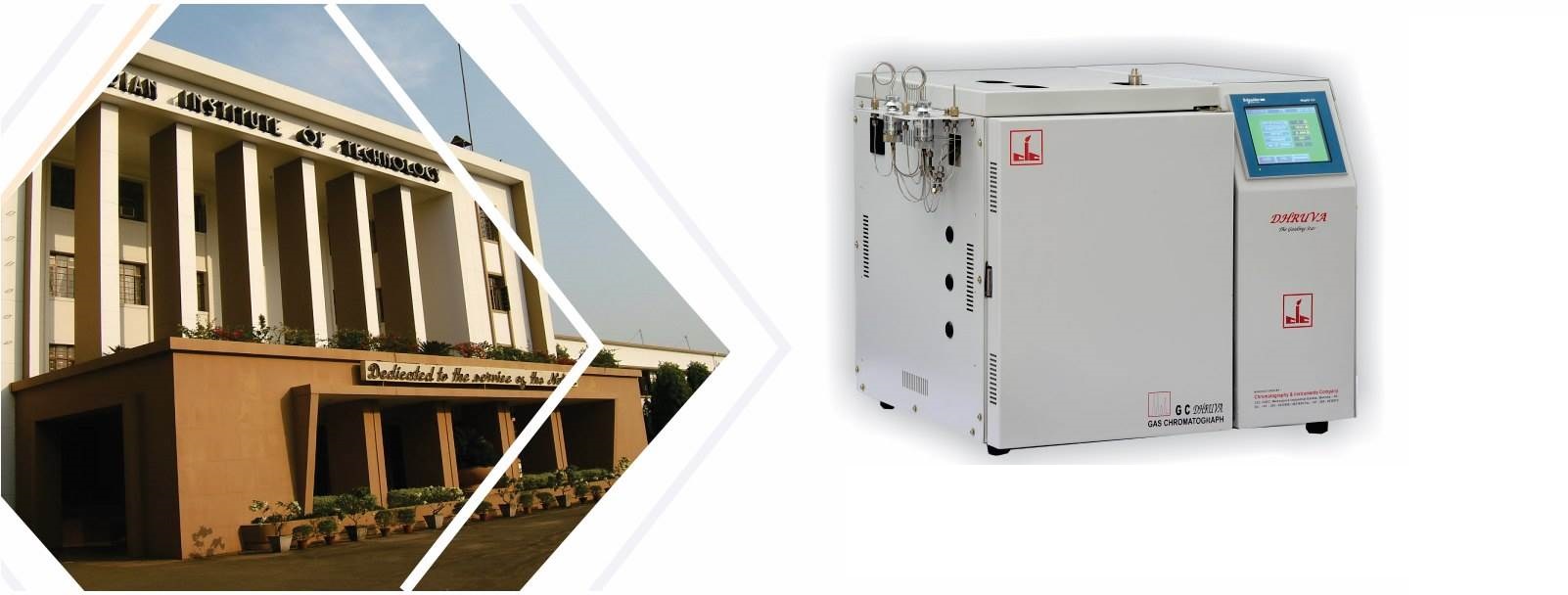Introduction to Gas Chromatograph
What is Gas Chromatograph?
Gas chromatograph (GC) is an analytical technique used to separate and analyze compounds that can be vaporized without decomposition. It plays a critical role in various scientific fields, providing a method to identify and quantify different substances within a mixture. The technique involves passing a gaseous sample through a stationary phase contained in a column, where different compounds are separated based on their volatility and interaction with the column material.
Importance of Gas Chromatography in Various Fields
Gas chromatograph is indispensable in many industries, including environmental monitoring, pharmaceuticals, food and beverage testing, and forensic science. It offers precise and reliable analysis, essential for quality control, research, and regulatory compliance. In pharmaceuticals, it ensures the purity and potency of drugs. The food and beverage industry relies on GC to test for contaminants and flavor compounds, while forensic scientists use it to analyze crime scene samples.
History and Evolution of Gas Chromatography
The concept of chromatography was first introduced by the Russian botanist Mikhail Tsvet in the early 20th century. However, gas chromatography as we know it today was developed in the 1950s by Archer John Porter Martin and Richard Laurence Millington Synge, who were awarded the Nobel Prize in Chemistry for their work in partition chromatography. Since then, gas chromatography has evolved significantly, with advancements in column technology, detectors, and data analysis methods, making it a versatile and powerful analytical tool.
Basic Principles of Gas Chromatography
Understanding the Gas Chromatograph
A gas chromatograph is an instrument used to perform gas chromatography. It consists of several key components: an injector, a column, a detector, and a data system. The column contains a stationary phase that interacts with the sample components, separating them based on their chemical properties.
How Gas Chromatography Works
The process of gas chromatography involves injecting a sample into the gas chromatograph, where it is vaporized and mixed with the carrier gas. The mixture travels through the column, where different compounds separate based on their interactions with the stationary phase. As the compounds exit the column, they pass through a detector that produces a signal proportional to the concentration of each compound. The resulting data is displayed as a chromatogram, a graph showing the detector response over time.
Key Components of a Gas Chromatograph
- Injector: Introduces the sample into the chromatograph.
- Column: Contains the stationary phase and is where the separation occurs.
- Detector: Senses the separated compounds as they exit the column.
- Data System: Records and analyzes the detector signals, producing a chromatogram.
Types of Gas Chromatographs
Packed Column Gas Chromatographs
Packed column gas chromatographs use columns filled with solid particles coated with a liquid stationary phase. They offer high capacity but lower resolution compared to capillary columns.
Capillary Column Gas Chromatographs
Capillary column gas chromatographs use long, thin sections coated with the steady phase. They are ideal for separating volatile compounds and are widely used in modern gas chromatography.
Comparison of Different Types
- Packed Columns: Higher capacity, suitable for large molecules, lower resolution.
- Capillary Columns: Higher resolution, faster analysis, suitable for volatile compounds.
Applications of Gas Chromatography
Environmental Analysis
It helps in monitoring the presence of volatile organic compounds (VOCs), pesticides, and other contaminants, ensuring environmental safety and compliance with regulatory standards.
Pharmaceutical Industry
In the pharmaceutical industry, gas chromatography is vital for drug development and quality control. It is used to analyze the purity of active pharmaceutical ingredients (APIs), detect impurities, and ensure the consistency and safety of pharmaceutical products.
Food and Beverage Industry
The food and beverage industry relies on gas chromatography to analyze flavors, fragrances, and contaminants. It helps in quality control by identifying and quantifying compounds that affect the taste, aroma, and safety of food and beverages.
Forensic Science
Forensic scientists use gas chromatography to analyze crime scene samples, including blood, urine, and tissue. It helps in detecting drugs, alcohol, and other substances, providing critical evidence in criminal investigations.
Components of a Gas Chromatograph
The Injector
The injector is where the sample is introduced into the gas chromatograph. It vaporizes the sample and mixes it with the carrier gas, ensuring it enters the column in a gaseous state. Injectors can be manual or automated, with the latter providing higher precision and reproducibility.
The Column
The column is the heart of the gas chromatograph, where the separation of compounds occurs. It contains the stationary phase, which interacts with the sample components, causing them to elute at different times. Columns can be packed or capillary, each offering distinct advantages.
Data System and Output
Advanced software tools help in interpreting the data, identifying compounds, and quantifying their concentrations.
Choosing the Right Gas Chromatograph
Factors to Consider
When choosing a gas chromatograph, consider factors such as the type of analysis, sample throughput, sensitivity requirements, and budget. Different applications may require specific column types, detectors, and software features.
Cost vs. Performance
Balancing cost and performance is crucial when selecting a gas chromatograph. High-end models offer advanced features and higher sensitivity but come at a higher price. Evaluate your needs and budget to choose the best option for your laboratory.
Installation and Setup
Preparing the Laboratory
Proper laboratory preparation is essential for successful gas chromatography. Ensure the lab has adequate space, ventilation, and electrical supply. Install safety equipment such as fume hoods and gas detectors.
Calibration Procedures
Regular calibration of the gas chromatograph is necessary to maintain accuracy and precision. Use calibration standards to verify the instrument’s performance and adjust settings as needed.
Operating a Gas Chromatograph
Step-by-Step Operation Guide
- Prepare the Sample: Ensure the sample is properly prepared and in a suitable solvent.
- Inject the Sample: Introduce the sample into the injector using a syringe or an autosampler.
- Run an analysis: Start analyzing and keep track of the chromatogram.
- Analyze the Data: Use the software to interpret the results and generate a report.
Troubleshooting Common Issues
Common issues in gas chromatography include poor peak resolution, baseline drift, and detector noise. Troubleshooting involves checking for leaks, ensuring proper column maintenance, and verifying calibration.
Maintenance Tips
Regular maintenance is essential for the longevity and performance of the gas chromatograph. Clean the injector, replace the column when necessary, and perform routine checks on the detector and data system.
Advanced Techniques in Gas Chromatography
Multidimensional Gas Chromatography
Multidimensional gas chromatography (MDGC) involves the use of multiple columns with different stationary phases to achieve superior separation of complex mixtures. It is particularly useful in fields such as petrochemicals and fragrance analysis.
High-Resolution Gas Chromatography
High-resolution gas chromatography (HRGC) uses advanced columns and detectors to achieve extremely high separation efficiency and sensitivity. In research and development, it is utilized to do extensive analyses on complex samples.
Data Analysis and Interpretation
Understanding Chromatograms
A chromatogram is a visual representation of detector response over time. Peaks on the chromatogram correspond to different compounds, with their retention times and peak areas providing qualitative and quantitative information.
Software Tools for Data Analysis
Advanced software tools are available for gas chromatography data analysis. These tools offer features such as peak integration, library search, and automated reporting, streamlining the data interpretation process.
Safety Considerations
Handling Chemicals and Gases
Gas chromatography involves the use of hazardous chemicals and gases. Proper handling procedures, including the use of personal protective equipment (PPE) and fume hoods, are essential to ensure safety.
Emergency Procedures
Establish and practice emergency procedures for chemical spills, gas leaks, and equipment malfunctions. Ensure that all laboratory personnel are trained in these procedures and know how to use emergency equipment.
Future Trends in Gas Chromatography
Innovations in Technology
Advancements in column technology, detectors, and data analysis software are driving the evolution of gas chromatography. Innovations such as microfluidic devices and automated sample preparation are enhancing efficiency and accuracy.
Emerging Applications
New applications of gas chromatography are emerging in fields such as biomedicine, environmental monitoring, and material science. These applications are expanding the scope and impact of gas chromatography.
Sustainability and Environmental Impact
Sustainability is becoming a key consideration in gas chromatography. Efforts are being made to reduce solvent usage, minimize waste, and develop eco-friendly materials for columns and other components.
Conclusion
Recap of Key Points
Gas chromatograph is a powerful analytical technique used across various industries for the separation and analysis of compounds. It involves complex instrumentation and requires careful consideration of factors such as column selection, detector type, and data analysis methods.
The Future of Gas Chromatography
The future of gas chromatograph looks promising, with ongoing technological advancements and expanding applications. Innovations in instrumentation and software are making gas chromatography more efficient, accurate, and versatile.
Final Thoughts
Whether you are in environmental analysis, pharmaceuticals, food and beverage, or forensic science, gas chromatograph offers valuable insights and solutions. Understanding the principles, components, and applications of gas chromatography can help you make informed decisions and achieve reliable results in your analytical endeavors.



